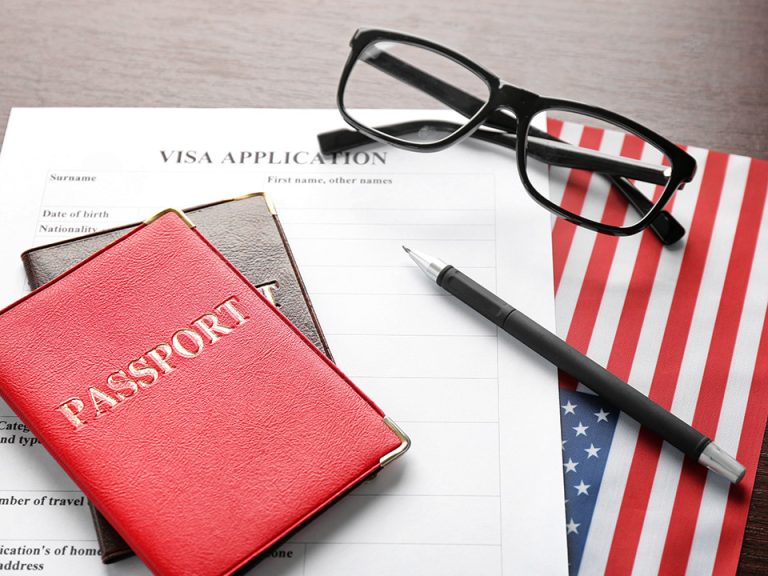Immigration law in the United States is a complex and multifaceted field, often presenting challenges even to those well-versed in its intricacies. This article aims to provide a comprehensive overview of U.S. immigration law, exploring the different types of visas, the application process, and common hurdles one might face. Whether you are a prospective immigrant, a legal professional, or simply interested in learning more about this crucial aspect of American law, this guide aims to shed light on the complexities of navigating U.S. immigration procedures.
Understanding U.S. Immigration Law
At its core, U.S. immigration law determines who is allowed to enter the country, how long they can stay, and who has the right to citizenship. It is governed by federal law, primarily the Immigration and Nationality Act (INA). The U.S. Citizenship and Immigration Services (USCIS), a branch of the Department of Homeland Security, is responsible for processing immigration and naturalization applications and establishing immigration services policies.
Key Types of Visas
The U.S. immigration system classifies immigrants into two main categories: Non-Immigrant Visas (temporary stay) and Immigrant Visas (permanent residence).
Non-Immigrant Visas: This category includes visas for tourists (B-2), business visitors (B-1), students (F-1), and temporary workers (H-1B, H-2A, H-2B, etc.). The specific visa type needed depends on the purpose of your visit.
Immigrant Visas: This category is for individuals seeking to live permanently in the U.S. They are often sponsored by a U.S. relative or employer. Some common types include family-sponsored visas (F1, F2A, F2B, F3, F4) and employment-based visas (EB-1, EB-2, EB-3).
The Visa Application Process
While the specific steps can vary based on the visa type, the general process involves:
Filing a Petition: Most visas require a U.S. citizen or business to file a petition on behalf of the applicant. USCIS reviews the petition and, if approved, it’s forwarded to the National Visa Center.
Visa Application: Once the petition is approved and a visa number is available, the applicant can submit a visa application form (DS-260) and the required documentation.
Interview: Applicants are usually required to attend an interview at a U.S. embassy or consulate.
Visa Issuance: If the application is successful, a visa is issued, allowing the individual to travel to the U.S.
Common Challenges in U.S. Immigration
Navigating U.S. immigration law is often challenging due to its complexity, long waiting periods, and potential for denials. It’s crucial to thoroughly understand the process and requirements for your specific visa category and to ensure all forms are correctly filled out and all necessary documentation is provided.
Seeking Legal Help
Given the complexity of immigration law, it can be beneficial to seek assistance from an immigration lawyer. They can help guide you through the process, ensuring you understand your rights and obligations, and help prepare your application to maximize your chances of success.
FAQs on U.S. Immigration Law
Can I work in the U.S. on a tourist visa?
No, a tourist visa does not permit you to work. If you intend to work, you’ll need a work visa, such as the H-1B for specialty occupations, H-2A for seasonal agricultural workers, or H-2B for other types of seasonal workers.
How can I get a Green Card?
There are several paths to obtaining a Green Card, which grants permanent residency. Some common paths include being sponsored by a family member or employer in the U.S., winning the Diversity Visa Lottery, or obtaining refugee or asylum status.
What happens if my visa application is denied?
If your visa application is denied, you’ll receive a notice that will include the reason for denial. Depending on the reason, you may be able to apply again or appeal the decision. Consult with an immigration lawyer to understand your options.
How long does it take to become a U.S. citizen?
The process to become a U.S. citizen, known as naturalization, varies but typically takes about 6 months to a year after submitting the application. However, to apply for naturalization, you generally must have been a permanent resident (Green Card holder) for at least 5 years, or 3 years if married to a U.S. citizen.
Can I stay in the U.S. after my visa expires?
Overstaying your visa can have severe consequences, including being barred from returning to the U.S. for several years. If you’re unable to leave before your visa expires, contact USCIS or an immigration lawyer as soon as possible.
Conclusion
U.S. immigration law is a complex field, presenting a multitude of challenges for those seeking to navigate its intricacies. Understanding the key types of visas, the application process, and the common hurdles can equip you with the necessary knowledge to embark on this journey.
Nevertheless, considering the complexities involved and the high stakes, it’s often beneficial to seek professional help. Immigration lawyers can provide invaluable guidance, ensuring that you understand the process, meet all requirements, and maximize your chances of success.
Please note, this article provides a general overview of U.S. immigration law as of the time of writing and does not constitute legal advice. Immigration laws and policies change frequently, and the specifics of your situation can significantly impact your legal rights and options. Always consult with an experienced immigration lawyer for advice tailored to your circumstances.









